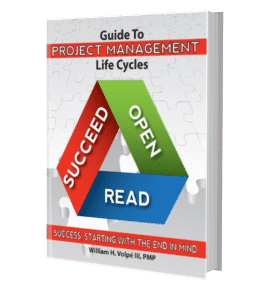Auditing Project Performance Through A Good Cost Estimate

Estimated reading time: 5 minutes

Effective measures for auditing project performance and controlling projects is the key to any project’s success. Project audits are done to assess the progress of a project and regular audit sessions ensure that a project’s management is in-sync with the project objectives. A standard checklist used includes:
- Strategic project management tools for organizing and monitoring every facet of a project
- Clearly-defined phases and sub-processes through a project’s lifecycle
- Delegation of responsibilities to ensure that each of the project phase agrees with the critical project objectives
Factors of a Good Cost Estimate
Part of a project audit is using estimates for scheduling and cost control. Having a good cost estimate will ensure that the project is able to do so through the auditing on the time, human resources, materials, budget, and specifications. The usefulness of a cost estimate depends on its reliability and accuracy, among other factors. These include:
- Accuracy
- Confidence Level
- Credibility
- Documentation
- Precision
- Reliability
- Risk detailing
- Uniformity
- Validity
- Verification
Accuracy: Aside from selecting the most accurate estimating techniques available, accuracy can be improved by revising estimates as the project is detailed and by building allowances into the estimate for resource downtime, project assessment and course correction, and contingencies.
Confidence level: In any estimate, it is important to communicate the amount of potential variability to stakeholders. Confidence levels can communicate estimates as ranges, such as those produced by three-point estimating techniques or Monte Carlo simulations.
Credibility: Increase the credibility of an estimate by incorporating expert judgment and by using set values for variables, such as unit costs and work rates.
Documentation: Since project managers are eventually held accountable to cost estimates, it is important that the assumptions underlying estimates are identified and recorded in writing, and that regular budget statements are provided. Thorough documentation precludes misunderstandings and helps stakeholders understand the reasons behind estimate revisions.
Precision: To reduce the variation in cost estimates due to techniques used, estimators should compare and corroborate estimates.
Reliability: Reliability is a concept based on the extent to which historical cost estimates for a certain type of project have been accurate. For new projects that are similar to successfully-completed past projects, analogous estimating techniques will allow reliable estimates.
Risk detailing: All projects can be affected by negative risks, so it is important to build allowances into cost estimates. Thorough risk identification and allocation of contingency reserves is the most common approach. Estimates should be overestimated rather than underestimated, and estimators should establish tolerance levels for cost deviation.
Uniformity: For organizations that conduct many projects of the same type, recommended unit costs are based on previous similar project, which enables them to create reference lists for recommended unit costs.
Validity: This involves checking the underlying data for accuracy. Improve validity by relying on established cost literature, and on cost indices when up-to-date literature is unavailable.
Verification: Cost verification is the act of checking that mathematical operations used in an estimate were performed correctly. Cost verification is much easier if estimates are properly documented.
The foundation of project management involves managing costs and scheduling. They are strategic elements to ensure efficiency and profitability, and successful integration of project schedule and cost will ensure project success. Scheduling projects allows your projects to be completed in a timely, quality, and financially responsible manner. To keep projects on track, set realistic time frames, assign resources appropriately and manage quality to decrease product errors.
Click below to download your free ebook copy of Guide To Project Management Life Cycles:
https://blog.opuskinetic.com/ebook-guide-to-project-management-life-cycles-opus-kinetic

